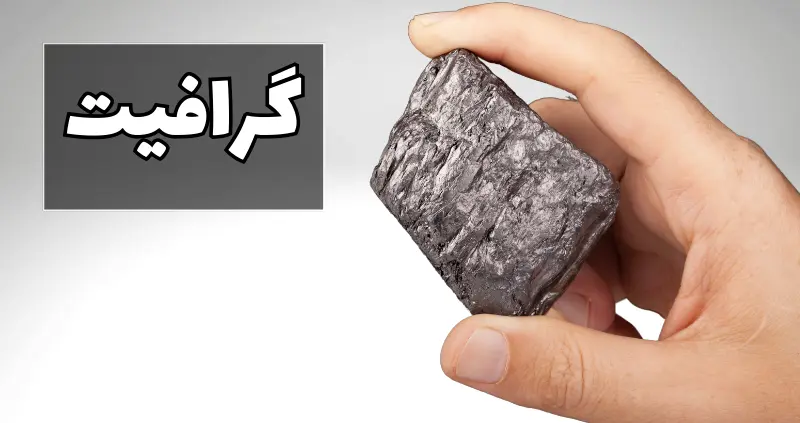
Graphite has been one of nature’s most amazing materials ever since early man gazed in wonder at the colorful flames of fire. This black and polished material, which is composed of carbon particles, is present in every corner of our life; From regular pencils to advanced batteries and emerging technologies.
With its unique crystalline structure, graphite offers interesting properties including high electrical and thermal conductivity, resistance to oxidation and corrosion, and low density. This amazing combination of properties has made graphite a material with wide applications in various industries including metals, energy, electronics and space.
But graphite is only the beginning. Recent discoveries in the field of carbon materials such as graphene and carbon nanotubes have introduced new horizons for wider applications of these materials. By examining the origins and properties of graphite, we can gain a deeper understanding of this amazing material and its potential to shape the future of technology.
The structure of graphite
Graphite is an allotropic material of carbon that has a regular and unique crystal structure. This structure consists of sheet-like layers of carbon, where carbon atoms are linked together by strong covalent bonds in a hexagonal pattern (similar to the structure of graphene). These layers are held together by weak van der Waals forces and there is a distance between them of about 3.35 Angstroms. This unique combination of strong intralayer bonds and weak interlayer forces gives graphite unique physical and chemical properties.
The atomic arrangement of graphite creates a hexagonal structure with a hexagonal crystal system. This structure gives graphite great flexibility and stiffness, so that its layers can slide over each other while resisting shear and tensile forces. These properties make graphite an excellent lubricant and lubricant that is used in a variety of applications including lubrication and electrode production.
In addition to ordinary graphite, there are other types of graphite that are structurally different. Rhombohedral graphite is a rare form of graphite in which carbon layers are symmetrically arranged. Turbostratic graphite is another form of graphite in which the layers are placed irregularly and randomly. These different types of graphite have different properties, including hardness, density and electrical conductivity, which make them suitable for specific applications.
Graphite production
Graphite is one of the abundant minerals in the earth’s crust, and pure graphite can be extracted from its natural sources. Rich deposits of graphite are found in different regions of the world including China, India, Brazil, Canada and Mexico. Graphite mining is often done through open pit or underground mines. There are various physical and chemical processes for purifying and enriching graphite extracted from mines so that it has the purity and quality required for various applications.
In addition to natural sources, graphite can also be produced synthetically through industrial manufacturing processes. One of the common methods is the carbonization of organic materials, in which organic materials such as coal, petroleum coke, or petroleum derivatives are decomposed at high temperature and in the absence of oxygen to produce graphite. Another method is electrochemical reduction, where graphite oxide is reduced in an electrolyte solution to produce pure graphite. These methods produce graphite with purity and unique properties for specific applications.
Graphite production on an industrial scale has important applications. Both natural and synthetic graphite are used in the production of graphite electrodes for the steel and aluminum industries. Graphite is also used to produce lubricants, lubricants, conductive inks, and brake materials. In emerging industries such as lithium-ion batteries, high-purity graphite is used as anode. The production of graphite with suitable quality for each of these applications plays an important role in the progress of various industries.
Learn more: silica refractory mass
Applications of graphite
Graphite is one of the materials with wide applications in various industries. One of its main uses is in the steel and aluminum industry. Graphite electrodes used in electric arc furnaces for melting and refining metals are made of high quality graphite. In addition, due to its good electrical and thermal conductivity, graphite is used in the production of crucibles and industrial furnaces for melting and heating materials.
Another important application of graphite is in the energy industry and batteries. In lithium-ion batteries used in electronic devices, electric vehicles and energy storage systems, graphite acts as the anode. The unique properties of graphite, such as high lithium adsorption capacity, good electrical conductivity and chemical stability, make it suitable for this application. Also, in the nuclear industry, graphite is used to make reactors and radiation shields due to its resistance to radiation.
The applications of graphite are not limited to the above industries. In the automotive industry, graphite is used as a lubricant in brakes, bearings and gears. Graphite is also used in making pencils, conductive inks, welding electrodes and stainless coatings. In emerging industries such as nanotechnology, graphite is used as a raw material for the production of graphene and carbon nanotubes with various applications in electronics, optical materials, and biomedicine. This wide range of applications shows the importance and efficiency of graphite in modern life.
